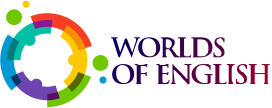
“When schools overlook the multilinguistic nature of our society, children are the ones who suffer – they are pushed to the margins or forced completely out of a system that does not recognize their linguistic reality.” (UNESCO, 2019)
This powerful statement made by UNESCO in 2019 encapsulates what happens in many monolingual learning contexts like some Anglophone universities even when they embrace diversity, equity, and inclusion (DEI) principles. In such contexts, it is crucial for languages to take centre stage in the institutional approach to DEI, from including their students’ linguistic capital into the everyday communication practices (https://t.co/bBIUxxwt3w) to embracing multilingual pedagogies. This would allow universities to close the circle as multilingual pedagogies work best when firmly rooted within an institution’s approach to DEI.
Multilingual pedagogies can unlock insights into diverse cultures, traditions, beliefs, knowledge systems and literacy practices, and in this way benefit everyone: students, staff and management.
Apart from making the languages used by students, parents and staff visible throughout the institution, some simple multilingual pedagogic practices that can help us to realise the potentials of having a multilingual student population include:
– Designing multilingual research tasks in which each member of the group should use their linguistic resources to gather information which is then shared in English to make comparisons and contrasts.
– Offering multilingual texts on the same topic in order to demonstrate that not only the language of the text is different but so are the culture, beliefs and knowledge system embedded in it.
– Providing opportunities for multilingual students to become linguistic and cultural mediators so that everyone benefits from being part of the same multilingual and multicultural learning space.
– Making room on reading lists for students to contribute with sources published in any of their linguistic repertoires.
Unlocking our students’ multilingual resources enriches the linguistic and cultural experiences of us all in one single learning space, while making everyone feel part of the institutional community instead of pushed to its margins.
I’ll be discussing each of these multilingual pedagogic practices in the next posts.

